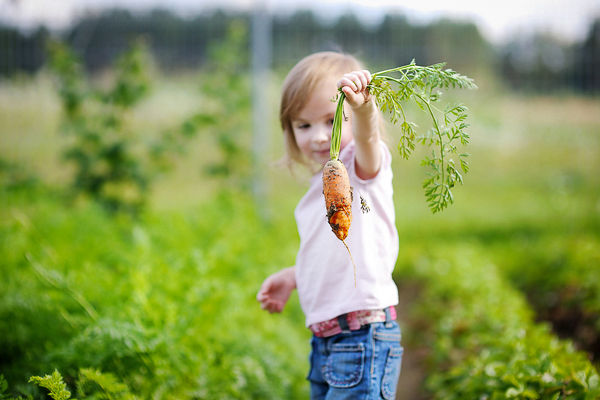Stanford scholars created food-themed storybooks that taught preschoolers about nutrients, the importance of eating different foods and how food fuels the body.

Stanford researchers have come up with a new way to get picky preschoolers to eat more vegetables.
Psychologists Sarah Gripshover and Ellen Markman found that teaching children the importance of healthy foods and why their bodies need a variety of foods drives kids to voluntarily eat more vegetables.
The findings, published in the journal Psychological Science, show that young children are capable of understanding a conceptual approach to nutrition.
People often assume that explanations of complex, abstract concepts will be too confusing for young children, the researchers said.
But children have a natural curiosity and want to understand how things work, they said.
“We sought to harness this curiosity by creating a framework for guiding children to understand more deeply why they need to eat a variety of healthy foods,” the researchers said.
Gripshover and Markman created five storybooks that emphasized key concepts about food and nutrition, including the importance of variety, how digestion works, the different food groups, characteristics of nutrients, and how nutrients help the body function.
A different book was read each week in two preschool classrooms during snack time for about three months while two other classrooms had snack time as usual.
Later, the children, aged 4 to 5, were asked questions about food, nutrition and bodily functions to assess their grasp of the concepts outlined in the books.
Gripshover and Markman found that the children who had heard the nutrition books more than doubled their voluntary intake of vegetables during snack time after the intervention. The amount of veggies eaten by the children who didn’t hear the books stayed about the same.
Knowledge of digestion and the role nutrients play in the body was also more likely among the children who had heard the books.
The researchers also compared their conceptual framework to a teaching strategy based on U.S. Department of Agriculture materials that emphasize the enjoyment of healthy eating and encourage trying new foods.
Both methods boosted vegetable consumption by preschoolers but children participating in the Stanford strategy increased their vegetable intake even more overall.
“What sets our materials apart from other approaches is the care we took to explain to children why their body needs different kinds of healthy food. We did not train children to eat more vegetables specifically,” the researchers said.
Gripshover and Markman said more research is needed to find out whether the gains in healthy eating would translate to other mealtimes, including at home, and how long they last.
“There is no magic bullet to encourage healthy eating in young children,” the researchers said. “We view our approach as unique but possibly complementary to other strategies. In the future, our concept-based educational materials could be combined with behaviorally focused nutrition interventions with the hope of boosting healthy eating more than either technique alone.”
****************************************
Kids Eat More Vegetables After Nutrition Lessons, Stanford Study Finds,






